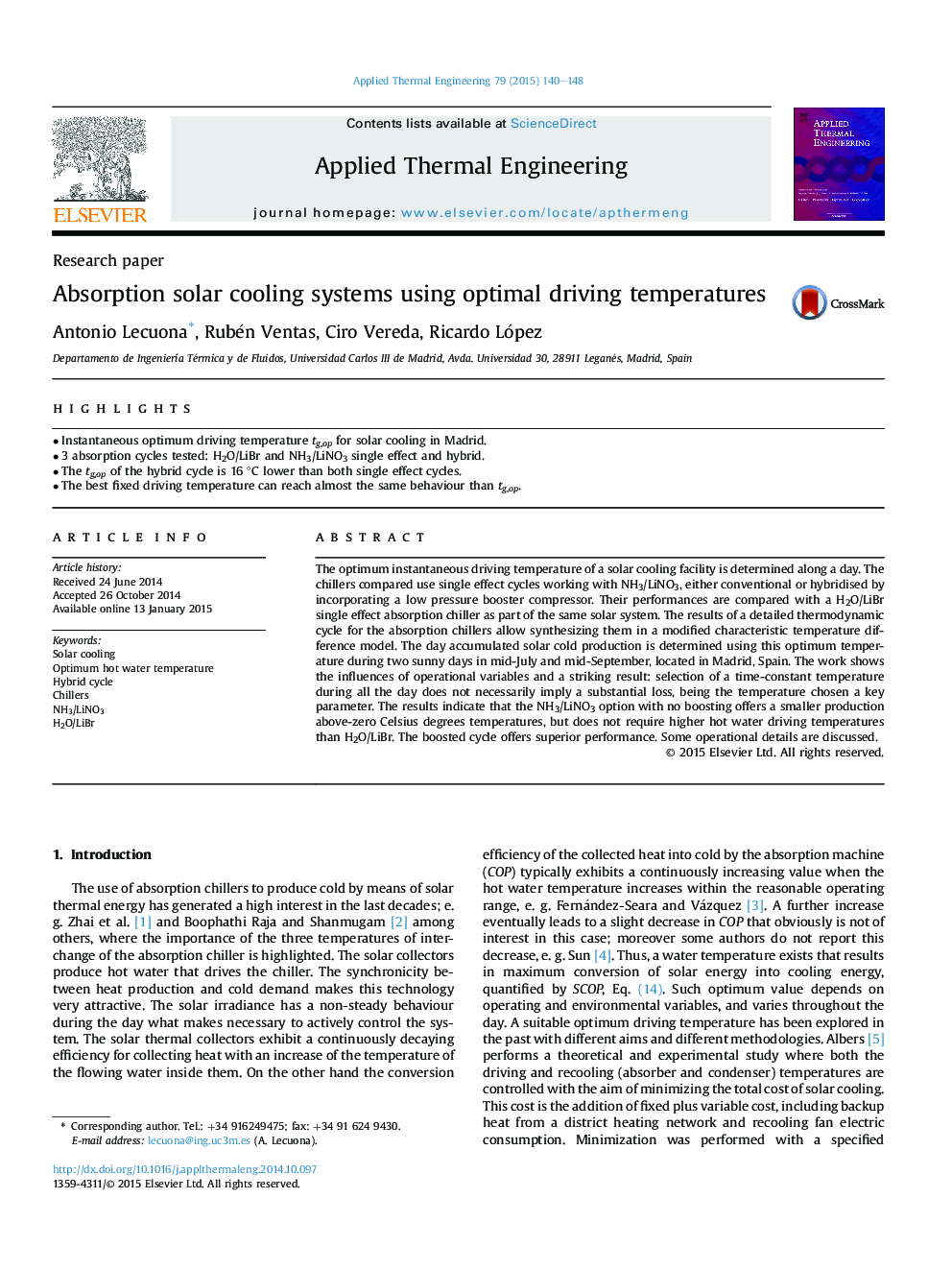| Article ID | Journal | Published Year | Pages | File Type |
|---|---|---|---|---|
| 645840 | Applied Thermal Engineering | 2015 | 9 Pages |
Abstract
The optimum instantaneous driving temperature of a solar cooling facility is determined along a day. The chillers compared use single effect cycles working with NH3/LiNO3, either conventional or hybridised by incorporating a low pressure booster compressor. Their performances are compared with a H2O/LiBr single effect absorption chiller as part of the same solar system. The results of a detailed thermodynamic cycle for the absorption chillers allow synthesizing them in a modified characteristic temperature difference model. The day accumulated solar cold production is determined using this optimum temperature during two sunny days in mid-July and mid-September, located in Madrid, Spain. The work shows the influences of operational variables and a striking result: selection of a time-constant temperature during all the day does not necessarily imply a substantial loss, being the temperature chosen a key parameter. The results indicate that the NH3/LiNO3 option with no boosting offers a smaller production above-zero Celsius degrees temperatures, but does not require higher hot water driving temperatures than H2O/LiBr. The boosted cycle offers superior performance. Some operational details are discussed.
Related Topics
Physical Sciences and Engineering
Chemical Engineering
Fluid Flow and Transfer Processes
Authors
Antonio Lecuona, Rubén Ventas, Ciro Vereda, Ricardo López,
